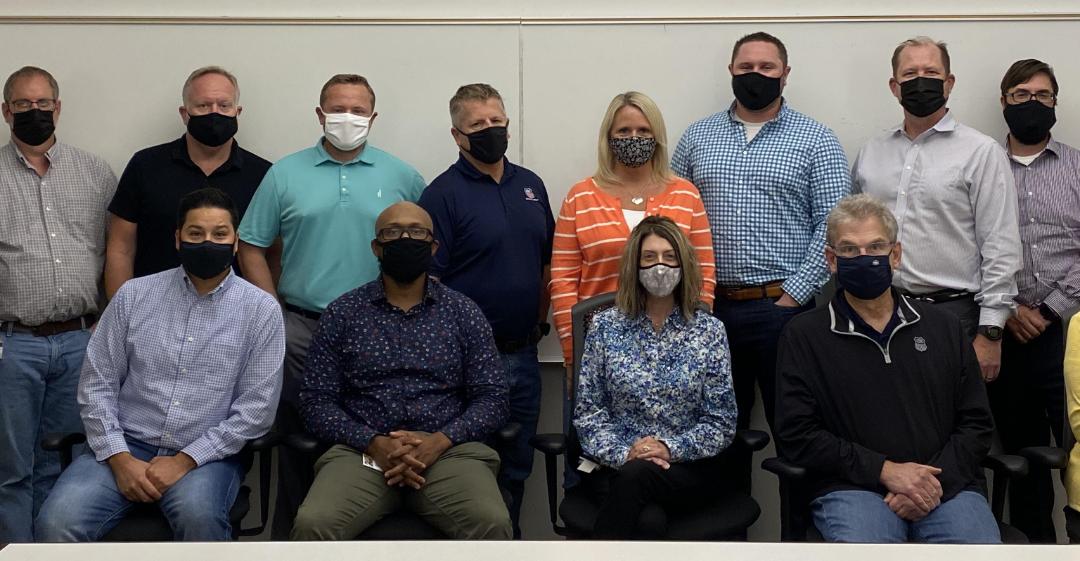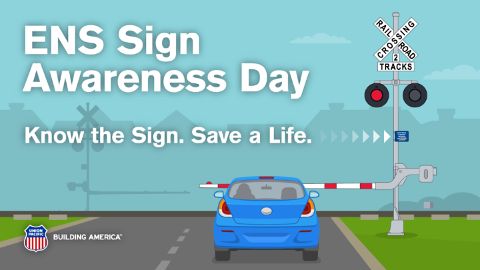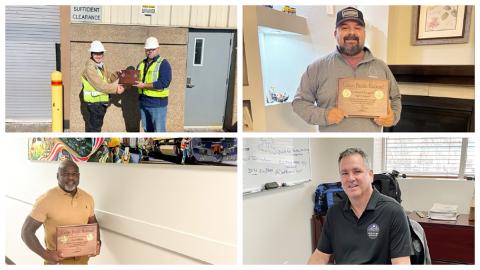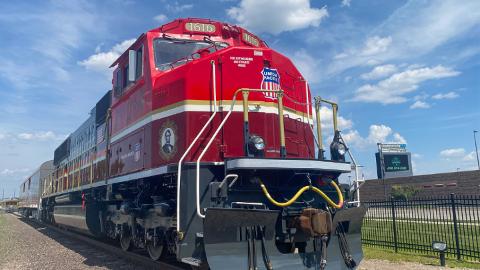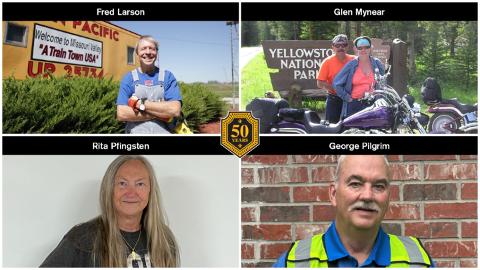Wildfires continue to rage across the West Coast, endangering residents, communities and critical infrastructure, like Union Pacific bridges and rail lines. Every West Coast subdivision has been impacted, with train reroutes and crew diversions fluctuating to meet network needs.
Subscribe to Inside Track
“None of us have been immune from the wildfire’s effects,” said Tom Lischer, senior vice president-Harriman Dispatching Center (HDC) and Network Operations. “Your resilience and reactions can be described in many ways: heroic, focused, determined, optimistic, supportive, creative, sacrificing.”
Take a behind-the-scenes look at how UP employees systemwide are stepping up to keep freight moving.
HDC Cohesively Coordinates Systemwide Traffic
The unexpected hero-tool of the fire outages is the aptly named Microsoft Teams. Twice daily, the HDC hosted screen-sharing Teams chats enabling the HDC, Crew Management Services (CMS), Customer Care and Support (CC&S), Network Planning and Operations (NPO), Engineering and Mechanical to create a clear “working document” transportation plan, ensuring cohesive planning, decision-making and execution.
“The HDC is designed, staffed and trained for situations just like this,” said Andrew Sanders, director-HDC. “We activated a special hours-of-service desk in CMS to share the workload, but overall, HDC’s internal operations were not impacted: we shined.”
The HDC used data from public entities, like CalFire and Geographic Area Coordination Center, as well as used UP mapping and real-time train movement tools to monitor the fire.
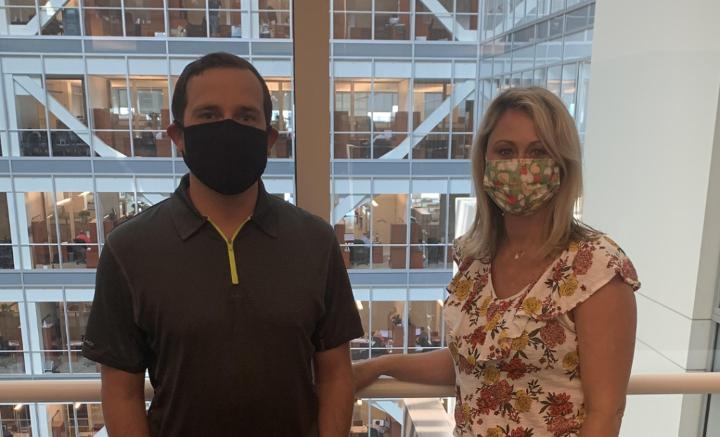
From left: Justin Sullivan, manager-Customer Care and Support, and Keri Casady, manager-Customer Care and Support.
Customer Care and Support: Keeping Customers at the Forefront
Delivering an industry-leading customer experience is always a priority, but it’s critical when disaster strikes. CC&S worked diligently to inform internal and external stakeholders of wildfire outages, bridge reconstruction progress and reroutes.
Wildfires are moving, shifting forces of nature, and employees had to adjust accordingly. CC&S provided daily updates to Marketing and Sales employees and collaborated with its Customer Communications team to distribute customer-based talking points and send weekly Customer News Announcements.
“The reroutes tightened up a number of crew bases and added congestion,” said Doug Svatos, senior director-Northern Region, CC&S. “Our team worked closely with the field, HDC and CMS to prioritize cars on through freight trains and escalate customer cases on yard and local jobs. The inter-team communication helped everyone understand the urgency for each customer.”

OMT James Sides at his temporary work location in La Grande, Oregon.
Communication was constant and key.
“The amount of coordination and communication taking place behind the scenes during a service interruption of this magnitude is tremendous,” Svatos said. “We were able to minimize customer impact by working together.”
Crew Borrow-outs Reinforce Surge Locations
As wildfires rearranged network priorities, Train, Engine and Yard (TE&Y) crew members followed suit, borrowing out on the Rocky Mountain and Pacific Northwest service units.
“Crew Management Services and Labor Relations worked with the union organizations to ensure we had temporary agreements in place to reallocate crews to open routes so they could continue working and have crews available to work when we opened,” said Abby Zach, superintendent-Train Operations, Transportation, Northern California Service Unit.
Agreement employees from St. Louis, Missouri; Fort Worth, Texas; South Morrill, Nebraska; Chicago, Illinois; and Little Rock, Arkansas, answered the call, heading to Hinkle and La Grande, Oregon; Nampa and Pocatello, Idaho; and Ogden and Salt Lake City, Utah.

Rail Relief volunteer Mary McClarnon, Risk Management Representative, headed from Omaha to La Grande, Oregon, to assist with crew transport.
“Our train crews from Dunsmuir, California, really stepped up, gaining certification to cover the BNSF detour and temporarily relocating to Klamath Falls, Oregon,” said Kim Fossland, director-Crew Management Services.
When additional help was needed, UP relied on reinforcements from Rail Relief, its volunteer program for nonagreement employees. Several Union Pacific Center employees helped drive crew vans to reallocate crews to open routes.
Industrial Hygiene Installs Wildfire Smoke Detectors
As wildfire smoke billows across the U.S., UP’s Industrial Hygiene team is utilizing TSI DustTrak Environmental Monitors to measure air quality at five California yards: Roseville, West Colton, Commerce, Oroville and Delores.
While the Environmental Protection Agency (EPA) has smoke detecting monitors across the country, few are located near UP yards; geographically closer readings will allow for more accurate readings.
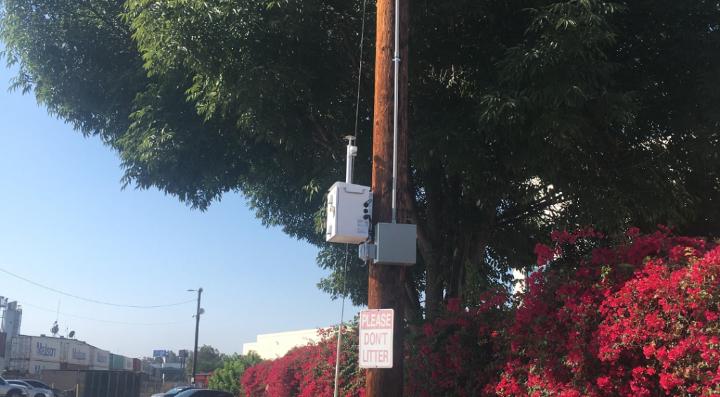
A TSI DustTrak Environmental Monitor mounted on a pole in the Dolores Locomotive Shop parking lot.
“This equipment allows employees access to the most up-to-date information,” said Will Walsh, manager-Industrial Hygiene, Workforce Resources. “Employees can log in remotely to see real-time California data. We no longer need to physically send industrial hygiene consultants to measure smoke levels.”

